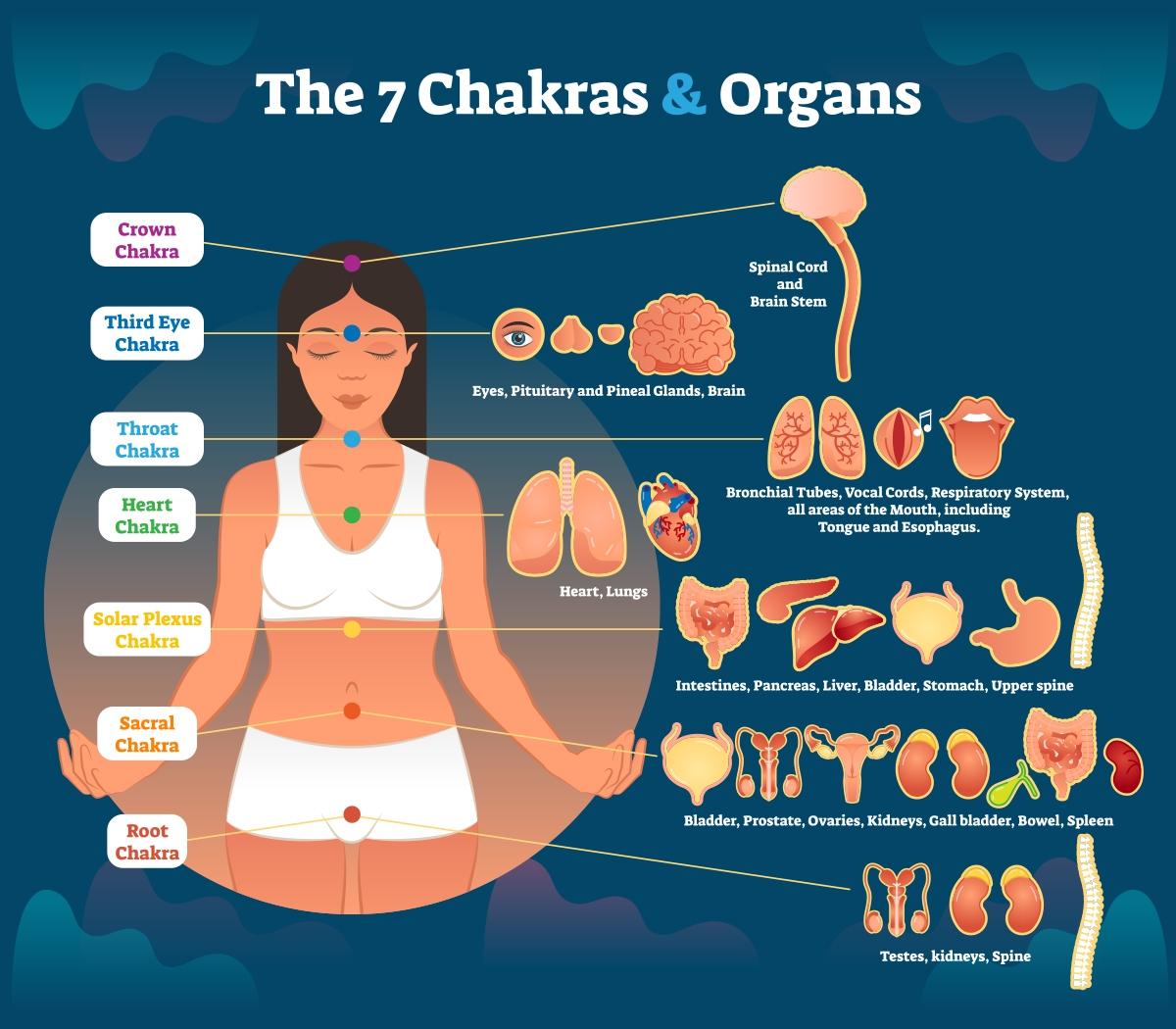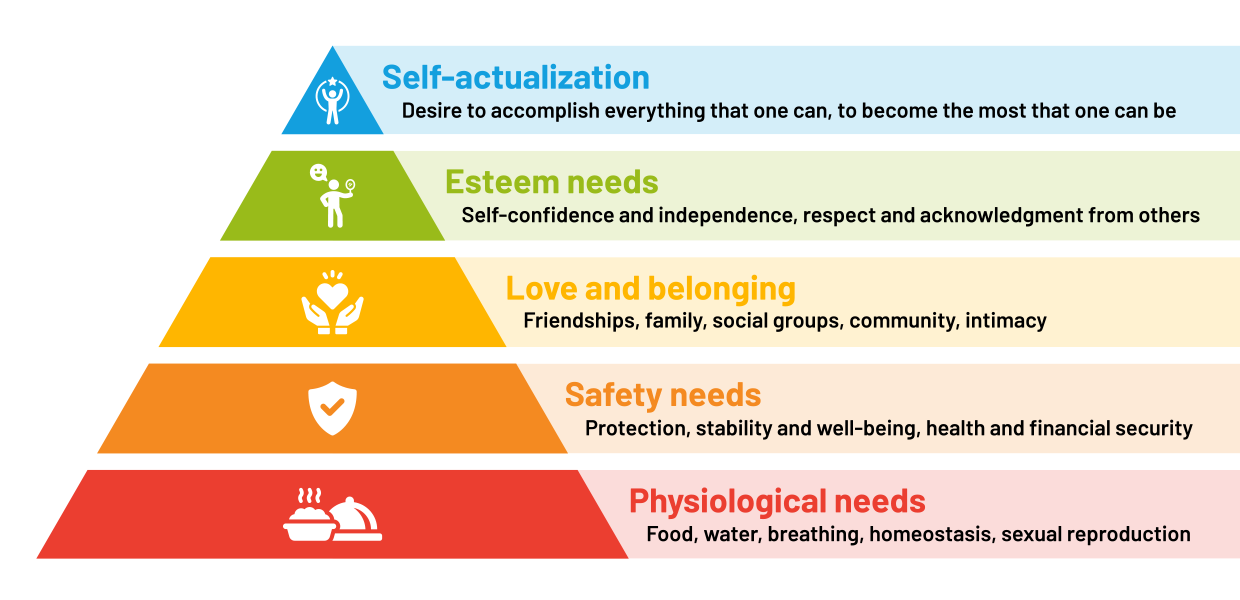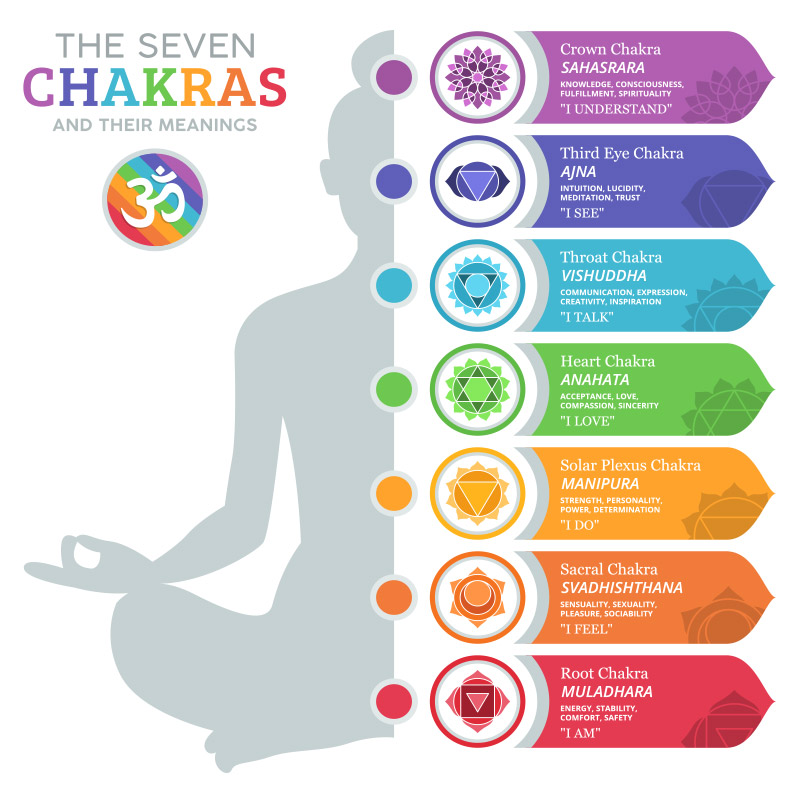7 Chakras Compared to Maslow's Hierarchy Of Needs

- Dec 23, 2022 modified: Oct, 03 2025
7 Chakras Compared to Maslow's Hierarchy Of Needs
Abraham Maslow's Hierarchy of Needs and the Seven Chakras: How human motivation aligns with energy centres
Have you ever wondered why certain people have different priorities and motivations? Well, human psychology is indeed a complicated thing. Several theorists in the field have their explanations for this certain phenomenon.
A certain theorist stands out, and that is Abraham Maslow. His theory states that a person must satisfy a lower-level deficit need before progressing on to the higher growth level need. This theory is known as Abraham Maslow's Hierarchy of Needs.
A hierarchy is simply defined as a system or organization wherein items or groups are ranked one above the other according to status or authority. In the case of this theory, these needs are stacked according to which should be satisfied first.
While this theory stands as a great psychosocial view of human needs and their motivation to survive, there is another philosophical view that poses interestingly similar ideas as Maslow's hierarchy of needs.
The 7 chakras is a concept stemming back from India that is described as an energy source that helps individuals work at their best level.
How do Maslow's Hierarchy of Needs and the 7 chakras seem to have a similarity when these ideas were formed decades apart? Read ahead as we're going to go in-depth about these two beliefs and how it impacts our society!

The Hierarchy of Needs (Maslow, 1943)
The Hierarchy of Needs is a theory on human motivation. Maslow (1943) has drawn several conclusions as to how this theory works. Here are some of the key points that he shared:
1 The integrated wholeness of the organism must be one of the foundation stones of motivation theory.
2 Such a theory should stress and centre itself upon ultimate or basic goals rather than partial or superficial ones, upon ends rather than means to these ends.
3 Practically all organismic states are to be understood as motivated and as motivating.
4 Human needs arrange themselves in hierarchies of pre-potency.
5 Motivation theory should be human-cantered rather than animal-cantered.
Essentially, Maslow believed that humans will constantly strive for a goal. His model is popularly shown as a pyramid with the five levels arranged in a hierarchy from bottom to upwards.
The bottom need (physiological needs) is described to be the most essential to satisfy before moving up to higher-level needs such as safety, love, esteem, and self-actualization.
Here are Maslow's needs explained in more depth and detail.
1 Physiological Needs
This is referred to as the starting point for motivation. These physiological needs are the material things that humans need to survive. These needs include food, water, sexual reproduction, and homeostasis.
Homeostasis refers to the body's ability to automatically maintain a constant state of function. According to Maslow, physiological needs must be satisfied, or else the human body cannot function optimally.
He refers to physiological needs as the "most pre-potent of all needs." This means that all other needs may be non-existent or pushed into the background if this need is not met.
For example, a hungry man will not think of anything else but food. According to Maslow: "for our chronically and extremely hungry man, Utopia can be defined very simply as a place where there is plenty of food."
2 Safety Needs
Right above physiological needs is safety needs.
Once physiological needs are well met, humans will need security and safety. This need now approaches a more general approach which depends on the individual.
What will make a person feel secure?
It could be a sense of financial security from a stable job. It can also be a sense of security from living in a safe and controlled environment (law and order). It may refer to feelings of safety from sickness or health-related accidents.
According to Maslow, a healthy and normal adult is largely satisfied with his safety needs. Ideally, this would mean that the person feels safe in a subjectively good society that is safe from wild animals, criminals, tyranny, or disasters.
3 Love Needs
After both physiological and safety needs are well met, the love needs will emerge.
Love needs are described as the need to feel affectionate relationships with friends, a significant other, or even affection from family.
At this level, Maslow emphasizes the importance of belongingness. This refers to the emotional need for interpersonal relationships and having a feeling of being part of a group.
Though, one thing Maslow would like to emphasize is that love is not synonymous with sex. According to him, sexual behaviour is studied as a physiological need. At the level of love and belongingness, it is important fact to consider that love needs involve both giving and receiving love.
4 Esteem needs
At the fourth level of Maslow's hierarchy of needs, he expresses the needs that include accomplishments and self-worth.
This can be classified into two sets:
The desire for strength, achievement, adequacy, and confidence to face the world. Alongside this is the need for independence and freedom.
The desire for reputation or prestige, recognition, attention, and importance of appreciation.
Essentially, this level makes sure that there is satisfaction with self-esteem. This will lead to the strength and confidence to be useful and necessary in the world.
5 Self-Actualization
At the peak of Maslow's hierarchy, we have self-actualization. This refers to the realization of one's potential and the sense of self-fulfillment one has achieved after their journey of personal growth. What a man can be, he must be.
Of course, the specific form that self-actualization will take will vary from person to person. This is not necessarily a career-related form of self-actualization. It can manifest in forms such as "Am I a good person?" or "Am I happy after everything?"
All prior needs (physiologic, love, safety, and esteem) must be satisfied before reaching self-actualization. At this point, this is where Maslow would refer to these as the basically satisfied people with the fullest life lived.

The Seven Chakras
Chakra comes from the Sanskrit word meaning "wheel" or "cycle". In history, this belief was cantered around the idea that our body is entirely made out of energy. These chakras were believed to be the body's spinning energy discs that should be opened and aligned.
The seven chakras are located and arranged to start from the base of the spine to the top of the person's head. Here are the chakras summarized:
| Chakra | Location | Colour | Meaning |
|---|---|---|---|
|
Root Chakra |
Base of the spine | Red | Stability and Grounding |
|
Sacral Chakra |
Below the belly button and above the pubic bone | Orange | Sexuality, Pleasure, and Creativity |
|
Solar Plexus Chakra |
Upper abdomen and stomach area | Yellow | Self-esteem and Confidence |
|
Heart Chakra |
Centre of the chest, above the heart | Green | Love and Compassion |
|
Throat Chakra |
Throat | Blue | Communication |
|
Third Eye Chakra |
Between the eyes, on the forehead (brow chakra) | Indigo | Intuition and Imagination |
|
Crown Chakra |
Top of the head | Violet or White | Awareness and Intelligence |
These energy centres of the body are helpful in keeping one's organs, mind, and intellect working at their best level. Spiritual energies have been followed by people many years ago, even if these are not best examined by medical studies.
Still, being aware of the energies in your own body is a healthy spiritual practice.
How are these ideas similar?
Writers and theorists of recent times have pointed out the similarities between these two ideas.
Abraham Maslow's theory is a more western and modern approach to looking at human motivation, while the chakras stem far back to Eastern ancient times way before psychology and medical studies were commonplace.
According to Anand (2019), the comparison shows that certain energies are needed within the body to attain the physical world's needs.
For example, Maslow's physiological needs requirement to be the "base" of his hierarchy correspond well to the Mooladhara or the root chakra. Both ideas pertain to stability and being grounded before being able to move forward.
Anahata (heart chakra) and Manipura (solar plexus chakra) are related to Maslow's love and belonging. Both these chakras emphasize the importance of love, compassion, as well as confidence.
Psychological theories and studies continue to evolve to this day. It's truly outstanding that ancient beliefs and spirituality still play a big role in discovering new ideologies!
Indigenous and Cultural Models
Human motivation in a cultural perspective may emphasise community, spirituality, and interdependence. There are non-linear paths to fulfillment. Collective well-being instead of individual self-actualisation.
References
Anad, S. (2019). The seven energy centres (chakras) and Maslow's hierarchy of needs. [Post]. LinkedIn.
https://www.linkedin.com/pulse/seven-energy-centers-chakras-maslows-hierarchy-needs-shiv-anand/
Maslow, A. H. (1943). A theory of human motivation. Psychological Review, 50(4), 370-96.
Stelter, G. (2016). A beginner's guide to the 7 chakras and their meanings.
Retrieved from: https://www.healthline.com/health/fitness-exercise/7-chakras
Search News Articles...
Recent Articles

Unique Web Systems Matter in a World of Sameness
- Dec 26 2025
- /
- 34

Most AI Websites Fail to Rank
- Nov 18 2025
- /
- 264

Sitemap.xml Best Practices
- Oct 14 2025
- /
- 933

Fake Reviews on Google My Business
- Oct 07 2025
- /
- 480

Sending Emails from Code
- Sep 17 2025
- /
- 575

US Tariff Shifts Undermining eCommerce
- Sep 05 2025
- /
- 704

Small Business Success Formula
- Aug 23 2025
- /
- 539

Do Strong CTAs Help or Hurt Your Website?
- Jul 31 2025
- /
- 734

AI Crawlers vs Search Crawlers
- Jul 04 2025
- /
- 939

AI vs. Human Writing - How to detect Ai
- Jun 26 2025
- /
- 1322
View All News Articles
Categories
A Gold Coast SEO and Web Developer